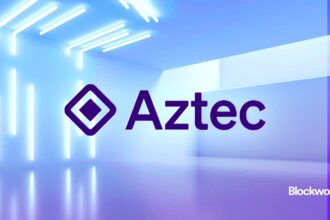HumidiFi, an exchange on the Solana network, processed nearly $3 billion in trades last week and made up some 15% of the blockchain’s entire trading volume.
There’s just one problem. The identity of the project’s creator is a mystery.
In recent months, a growing portion of the trading volume on Solana is being sent to more than half a dozen so-called dark exchanges — or automated market makers. These platforms operate behind the scenes to execute billions in token swaps.
They accounted for over $6 billion worth of volume on the blockchain last week, about 30% of all trading, according to data from Blockworks Research.
In other words, much of the trading on Solana is going dark.
Automated market makers, code on blockchains that let users swap tokens without the need for a middleman, have long been a staple of the DeFi landscape.
Dark AMMs are often able to outcompete conventional decentralised exchanges because they’re able to actively manage their liquidity. They’re also able to better defend against trading bots looking to profit at their expense.
This lets them offer users cheaper prices on swaps, so exchange aggregators like Jupiter send more trades their way.
Going dark
Proponents of blockchains have long touted that they help to create a more open financial system compared to the closed garden of traditional finance.
But that promise could be fading as dark AMMs increasingly outcompete their more open counterparts.
Those running dark AMMs often choose to remain hidden because they only deal with aggregators, not the traders directly.
In addition to HumidiFi, the creators of other prominent dark AMMs, including ZeroFi and GoonFi, have also kept their identities hidden.
Some have opted for transparency, though.
Fierce competition
Unlike other decentralised exchanges, dark AMMs don’t have a website, and they don’t let users pool their liquidity and earn fees when other users swap through them.
Instead, they typically rely solely on the liquidity provided by their creators, and only accept trades routed to them through aggregators, like Jupiter. Aggregators, as their name suggests, bundle various decentralised exchanges into a single interface.
This situation has ignited fierce competition.
When a user places a trade through an aggregator, it sends the request to all integrated exchanges and presents the user with the exchange that offers the best price.
If dark AMMs can shave off even a fraction of a percent on a trade, Jupiter will pick them over their competitors. And the more trades dark AMMs fulfil, the more money they make from fees.
“If I’m a Solana engineer looking to compete purely on my technical prowess, dark AMMs are the most interesting game right now,” Edgar Pavlovsky, a Solana DeFi developer, said on X.
Dark AMMs can offer better prices on trades because they actively manage their liquidity, increasing efficiency.
This means constantly updating bids and offers for tokens, and making sure prices are accurate by referencing them against offchain data.
The problem with conventional AMMs is that their liquidity is passive, meaning prices are only updated when users trade through them. This means liquidity providers can lose money during sudden price swings as bots arbitrage price differences, an effect called loss-versus-rebalancing.
What’s more, conventional AMMs are incentivised to drive volume, even if that means attracting aggressive or toxic flow that ends up hurting passive liquidity providers, Keyrock’s Hajian said.
Because bots aren’t cutting into their profits, dark AMMs can often offer better trade prices. The better the prices they offer, the more likely aggregators like Jupiter are to pick them to fulfil trades.
And the trend looks set to continue.
Dark AMMs already dominate stablecoin trading volume on Solana, according to data compiled by Benedict Brady, founder of crypto data platform Meridian.
“[It’s] probably only a matter of time before active liquidity entirely outcompetes passive liquidity,” Brady said.











